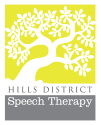What is LEGO®-Based Therapy?
LEGO®-Based Therapy is a social development treatment program for children and teenagers with language and/or social communication difficulties, including those diagnosed with Autism Spectrum Disorder (ASD) and other social communication impairments (LeGoff et al., 2014; Raising Children Network, 2018). The program is a non-traditional intervention that uses items of interest (Lego®) with structured roles to achieve learning (i.e. progress in social and communication skills development) (LeGoff et al., 2014). LEGO® offers children and teenagers with a motivating, safe and engaging opportunity to participate in group activities with peers.

What does LEGO® Group look like at HDST?
We have created a group based on some elements of LEGO®-Based Therapy, but have modified our approach and tasks to embrace diversity and ensure we are supporting all communication styles. We continue to provide opportunities for participants to decide what LEGO® project they would like to complete, and engage in ‘freestyle-building’, allowing them to build their own designs (LeGoff et al., 2014).
Using neurodiverse affirming principles to guide our structure of the Lego Groups we have modified or added to the group to include:
- Addition of Konfident Kidz workbooks at the beginning of each session to focus and target a specific area of communication and provides a discussion point prior to the lego element of the group (written by a neurodivergent teacher)
- Encouraging self-advocacy and embracing communication differences
- Continuing to use structured roles of Lego therapy which allows for predictability
- Providing choice and control within these structured roles
- Providing accommodations and supports such as
- Spending time developing an understanding of each child’s unique needs and requirements
- Sensory supports (which children can choose throughout the session)
- Breaks as required
- Visuals to support communication and executive function

Who can participate in LEGO® Group at HDST?
At HDST, our LEGO® Group is designed for organised pairs/groups of children from Kindergarten to year 2. Our clinicians will screen all attendees to ensure our groups will be of benefit to them. LEGO® Group is delivered in two primary modes:
- Connection and collaborative building in pairs (2 children)
- Connection and collaborative building in groups (3 – 4 children)
We also run an adapted Lego group for our Preschoolers that combines elements of Lego therapy, whilst also incorporating other language and social communication goals.
“There’s a lot of intense communication going on, so every little piece has to be talked about.”
– Dr Daniel LeGoff
Does LEGO®-Based Therapy work?
HDST continues to offer LEGO® Group to our clients. We appreciate the increasing amount of research reporting changes for children with diagnoses of ASD or social communication impairments that participate in LEGO®-Based Therapy. These include:
- Increased self-initiation of interactions during free play with peers (LeGoff, 2004)
- More sustained social interactions outside of LEGO®-Based Therapy sessions (LeGoff, 2004)
- Improved social communication (Owens et al., 2008)
- Emerging evidence of improvements across communication competencies (including social skills) when adapted for Augmentative and Alternative Communication users (Gough & Dutton, 2018)
- Improved social and family relationships and increased social play (Lindsay et al., 2016)
References
- LeGoff, D.B., Gómez de la Cuesta, G., Krauss, G.W., & Baron-Cohen, S. (2014). LEGO®-based therapy: How to build social competence through LEGO®-based clubs for children with autism and related conditions. London: Jessica Kingsley Publishers.
- Raising Children Network (2018). Lego® therapy: Therapy at a glance. Retrieved from: https://raisingchildren.net.au/autism/therapies-guide/lego-therapy
- Andras, M (2012). The value of LEGO® Therapy in promoting social interaction in primary-aged children with autism. Good Autism Practice, 13, 2, 2012.
- Owens, G., Granader, Y., Humphrey, A., & Bohen-Cohen, S. (2008). LEGO® therapy and the social use of language programme: An evaluation of two social skills interventions for children with high functioning autism and Asperger syndrome. Journal of Autism and Developmental Disorders, 38, 1944-1957. doi: 10.1007/s10803-008-0590-6.
- LeGoff, D (2004) Use of LEGO as a Therapeutic Medium for Improving Social Competence Journal of Autism and Developmental Disorders 34 (5), 557–571.
- LeGoff, D.B., & Sherman, M. (2006). Long-term outcome of social skills intervention based on interactive LEGO® play. Autism, 10(4), 317-329. doi: 10.1177/1362361306064403.
- Gough, S., & Dutton, N. (2018). The novel use of LEGO®-based therapy to develop communicative competence in children who use augmentative and alternative communication (AAC) systems. The 9th Annual Conference of Association for Simulated Practice in Healthcare, Liverpool, United Kingdom. https://doi.org/10.1136/bmjstel-2018-aspihconf.1
- Sally Lindsay, S., Hounsell, K. G., & Cassiani, C.(2017). A scoping review of the role of LEGO® therapy for improving inclusion and social skills among children and youth with autism. Disability and Health Journal, Volume 10, Issue 2, https://doi.org/10.1016/j.dhjo.2016.10.010.
